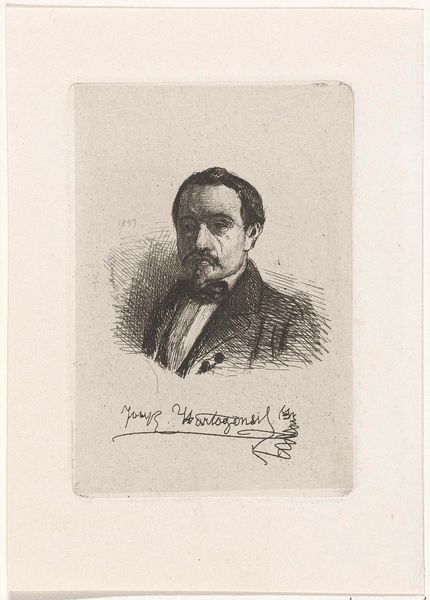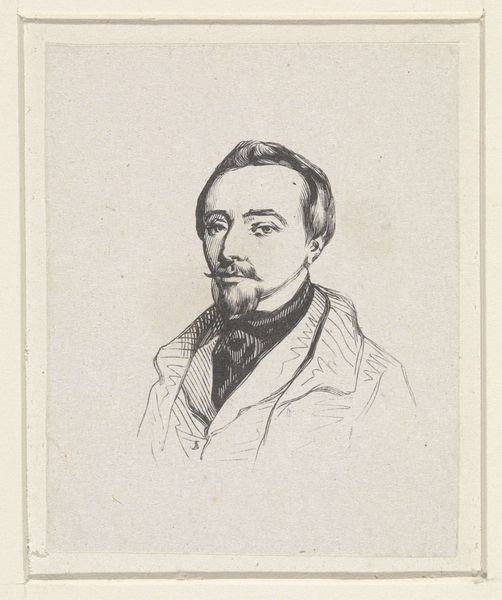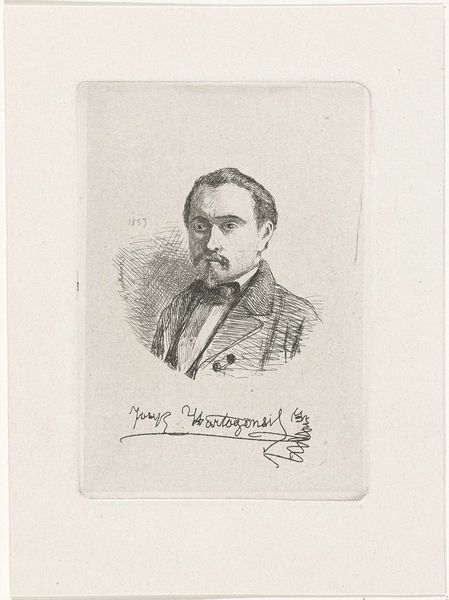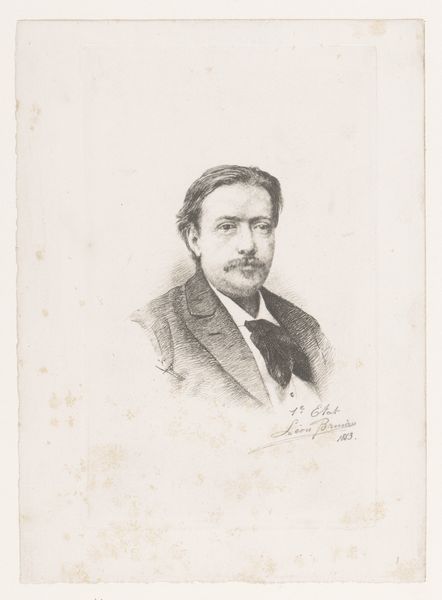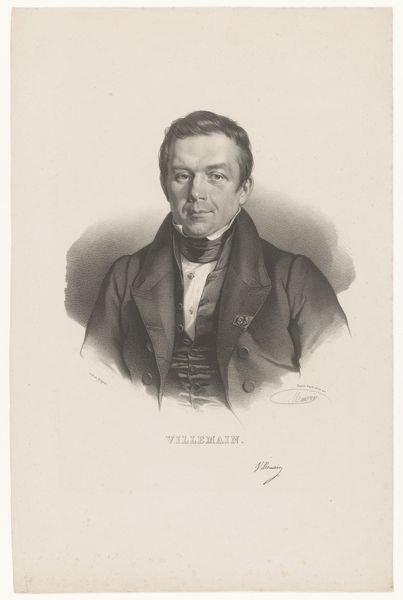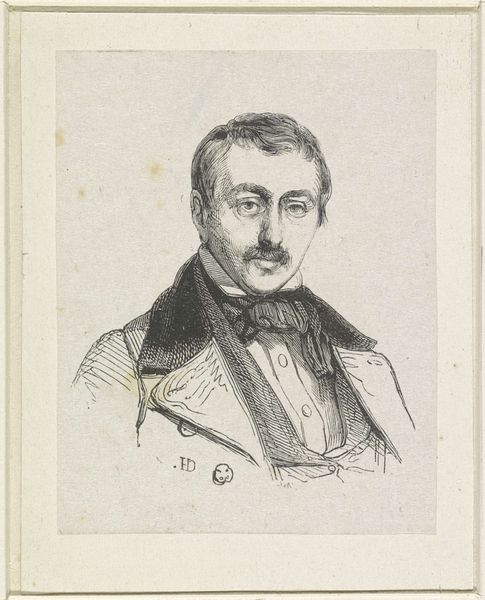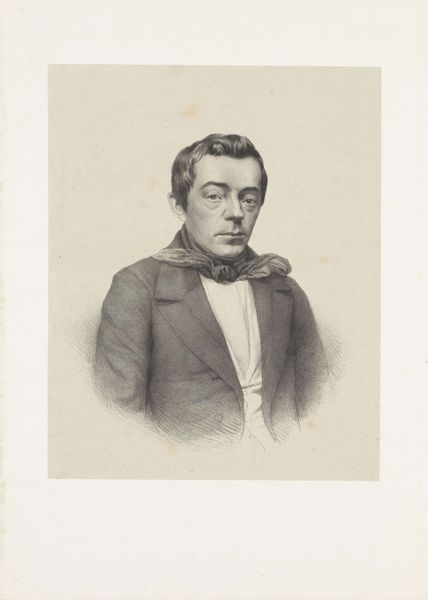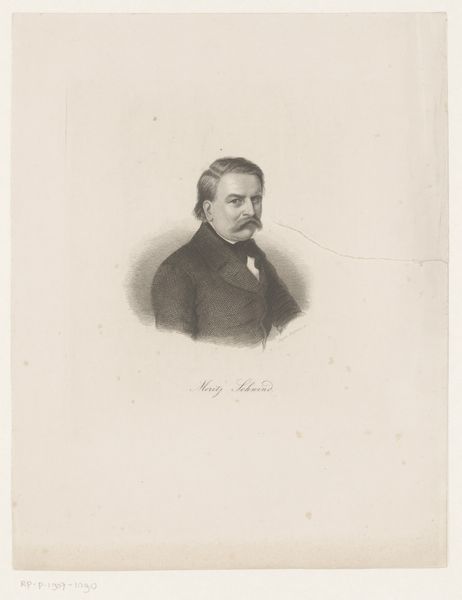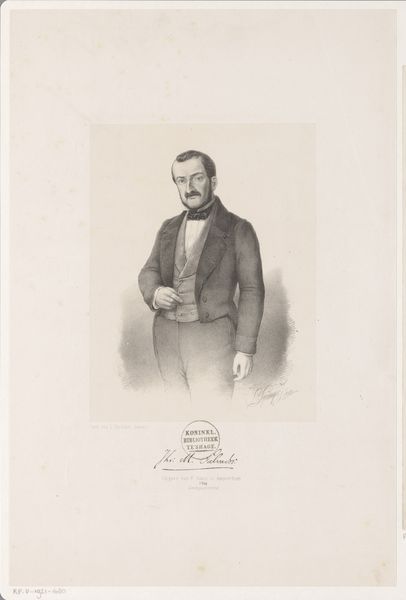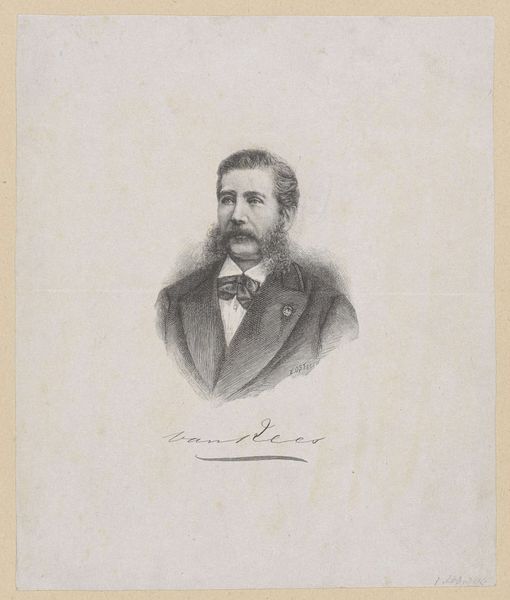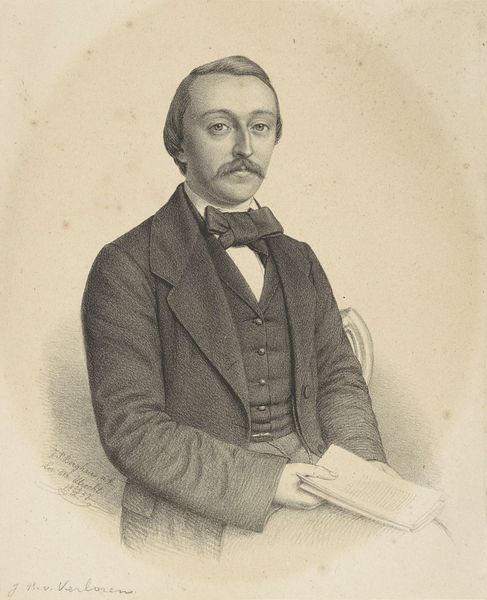
print, etching
#
portrait
#
self-portrait
# print
#
etching
#
history-painting
#
realism
Dimensions: height 91 mm, width 63 mm
Copyright: Rijks Museum: Open Domain
Curator: Up next, we have Joseph Hartogensis' "Self-Portrait," an etching done in 1857 and currently held at the Rijksmuseum. Editor: It's strikingly intimate, wouldn't you agree? There's something about the fineness of the lines and the way the shadows play across his face that feels so immediate. A pensive moment captured, maybe? Curator: I'd say so, but the "why" is equally interesting. The rise of self-portraiture was heavily shaped by the democratization of art. As artists sought more control over their image and legacy within an art market, producing and disseminating your own image through prints like this gained traction. Editor: Absolutely, and within that power dynamic, who gets represented is crucial. How does his class and profession intersect with visibility and self-representation here? Is there something radical about a man in his position choosing to make his image available in this way? Curator: He was indeed well-connected, from a family heavily involved in public life. During this time, history painting was really championed by museums, so this also suggests a negotiation, or merging, of the personal and public sphere. The "who" and "why" of that accessibility seem key to how we engage with the artwork today. Editor: Fascinating. And this etching process itself speaks to broader accessibility—allowing for the reproduction of images beyond singular paintings for the wealthy elite, although his signature would still ensure the print had a distinct, exclusive value. This piece isn’t just about who Joseph Hartogensis was; it’s also asking us to consider how art shapes social dynamics. Curator: Exactly. What seems simple at first glance – a portrait in lines – can tell a lot. The politics of imagery. It’s something that speaks so heavily to the present, in terms of social media and representation. Editor: The questions this self-portrait raises remain urgent for today’s audiences as well, as we’re all called to reflect on who is seen, who has the agency to see, and who controls the narrative. Curator: Absolutely, it's fascinating how looking into the past through these self-made images provides a clearer understanding about present power structures, gender, class, and social representations in art and life.
Comments
No comments
Be the first to comment and join the conversation on the ultimate creative platform.
